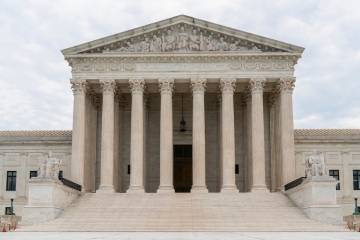The Fordham Institute has built its reputation over the years on the strength of its commentary and research. We’ll leave the former for another blog, but given all of the newsworthy events, you may have missed one of our research studies released in 2020. Some of the reports have maintained our traditional focus on data and rigorous analysis of long-term trends, while others were shorter-term analyses meant to inform the hot-topic debates presently facing Ohio policymakers. The following summarizes the past year in Fordham-Ohio reports—and be sure to give them a read!
The fourth edition of our Ohio Education by the Numbers publication was done and dusted before the pandemic started, but the shadow was being felt and thus the typical February publication date held back. While the companion website was updated with a panoply of vital statistics on anything from enrollment to achievement data, the print and downloadable versions on the Fordham website did not appear until April. Visits to both websites were brisk throughout the year, reinforcing our belief that these birds-eye data on Ohio’s K–12 education system are widely useful to researchers, policymakers, and the general public.
Our next research report was born of the state’s Covid-19 response: specifically, of legislative action in April that put Ohio’s school accountability system on pause. This was the right and proper course, given the vast unknowns facing policymakers and K–12 education at that time. But understanding that preparation is always key, we started to contemplate what accountability might look like in the wake of the pandemic. To that end, we spent weeks analyzing Ohio’s accountability mechanisms and the assessment and report card data that underpin them. In June, we published a set of recommendations that we believe would enable Ohio leaders to successfully reboot the accountability system. Titled Resetting school accountability, from the bottom up, authors Chad Aldis and Aaron Churchill provide both short- and long-term recommendations that would move Ohio from a top-down accountability framework to one that is driven primarily by parent choice and clear information about school quality. While it remains to be seen whether our recommendations will be heeded, the paper should be useful to anyone interested in the future of accountability in the Buckeye State.
For more than two decades, charter schools have offered thousands of Ohio students a public school option in their communities. But whether charters have provided a high-quality education has long been debated. In August, we released a report that rigorously evaluates the impact of Ohio’s charter schools on student outcomes during the 2016–19 school years. Conducted by Ohio State University professor Dr. Stéphane Lavertu, the analysis finds significant gains on state math and English language arts exams for brick-and-mortar charter students in grades four through eight, as compared to their peers in traditional district schools. Consistent with prior research, Lavertu finds that Black students make particularly strong progress. Additionally, attendance rates increase and disciplinary incidents decrease when students attend a brick-and-mortar charter school. These data not only show the strong improvements of Ohio’s charter school sector in recent years, but also underscore the importance of data and analysis to drive a fact-driven debate.
Next up, we released an analysis of Ohio’s teacher pension system, conducted by national pensions expert Chad Aldeman and published in November. This report examines the expected lifetime benefits for Ohio teachers under the state’s three retirement options, which include a traditional pension, a 401(k)-style defined contribution plan, and a hybrid plan that combines features of both. In conjunction with the release, we held an online event and a lively Q & A showed the depth of interest in both the findings and Aldeman’s recommendations. Want to know which option performs best for teachers—and what the state can do to ensure more teachers are in it? Read the report or watch the event video to find out!
Our final research report of the year was both historical and up-to-the-minute. As changes to the state’s school funding system were being debated in the General Assembly, an oft-stated reason for the expensive overhaul was to bring Ohio’s funding system into compliance with the state constitution. But is it actually true that today’s system is unconstitutional? In this report (and the release event) author Aaron Churchill examines the arguments and the rulings in the 1997 Ohio Supreme Court’s DeRolph decision, and analyzes the data from the 1990s until the present day. Investigating four areas of concern, Churchill argues that, by any reasonable standard, Ohio’s funding system is likely to meet constitutional requirements. Whether you agree or disagree with that conclusion, it’s hard to dispute the facts that show that today’s system varies in important ways from the one ruled unconstitutional nearly a quarter century ago.
* * * * *
As you can tell, we at Fordham believe that debates founded on evidence rather than myths and presuppositions are more likely to yield policies that can truly benefit Ohio students, families, and citizens. In the coming year, we’ll continue to deliver high-quality research that we hope provokes thoughtful discussion about key policy issues. We thank all readers for their interest in our work, and look forward to the coming year. Stay tuned!



